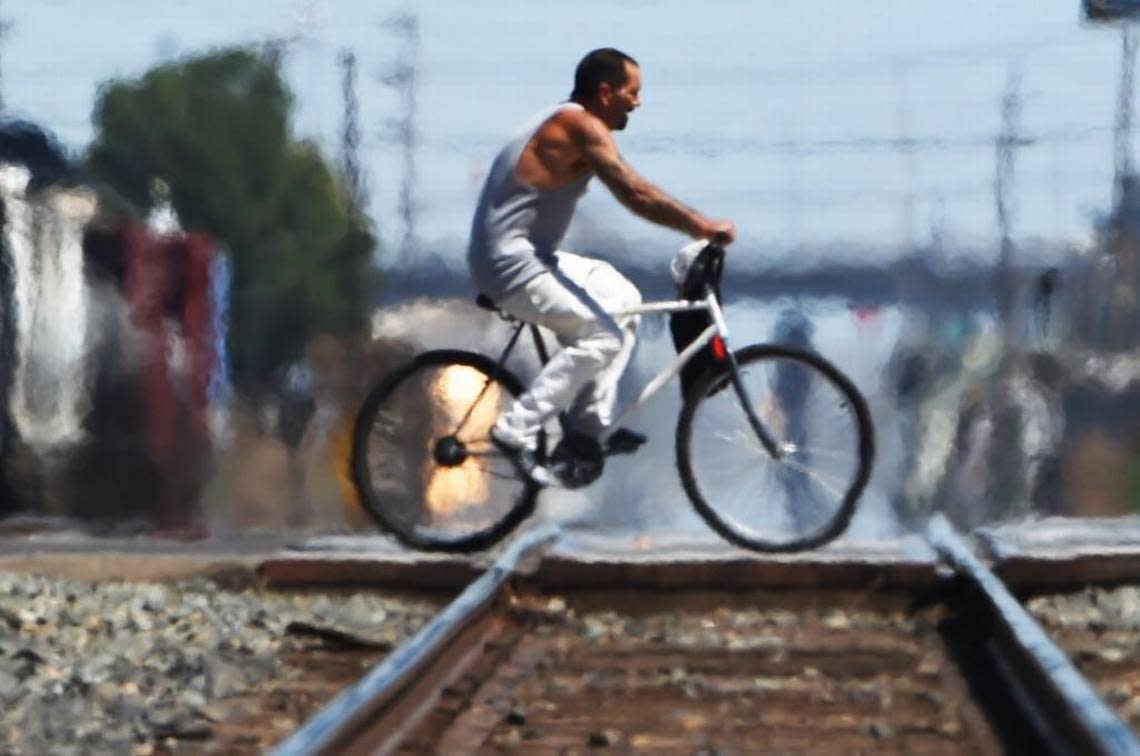San Joaquin Valley’s most vulnerable communities are hit hardest by climate change
This story is part of a series produced by Fresnoland and the Central Valley News Collaborative, exploring the impact of climate change on various populations within the central San Joaquin Valley, particularly those most vulnerable to these extreme weather conditions.
As temperatures soared toward 105 degrees Wednesday, Esther Fox, 64, sought refuge in the gym at the Ted Willis Community Center in Fresno.
Outside, the humid air made breathing difficult. But inside the air conditioned gym, which acts as a cooling center during periods of extreme heat, Fox watched videos on her phone and her three dogs relaxed. Fox is unhoused and lives in her car.
“The car gets really hot, even under the shade,” she said.
Fox is not the only one feeling the heat in Fresno. Since July 10, the temperatures have stayed in the triple-digit zone. There have been 41 days over 100 degrees this year. Fresno proclaimed a local emergency as a result of drought. And wildfires have burned through nearly 20,000 acres of Yosemite National Park this summer.
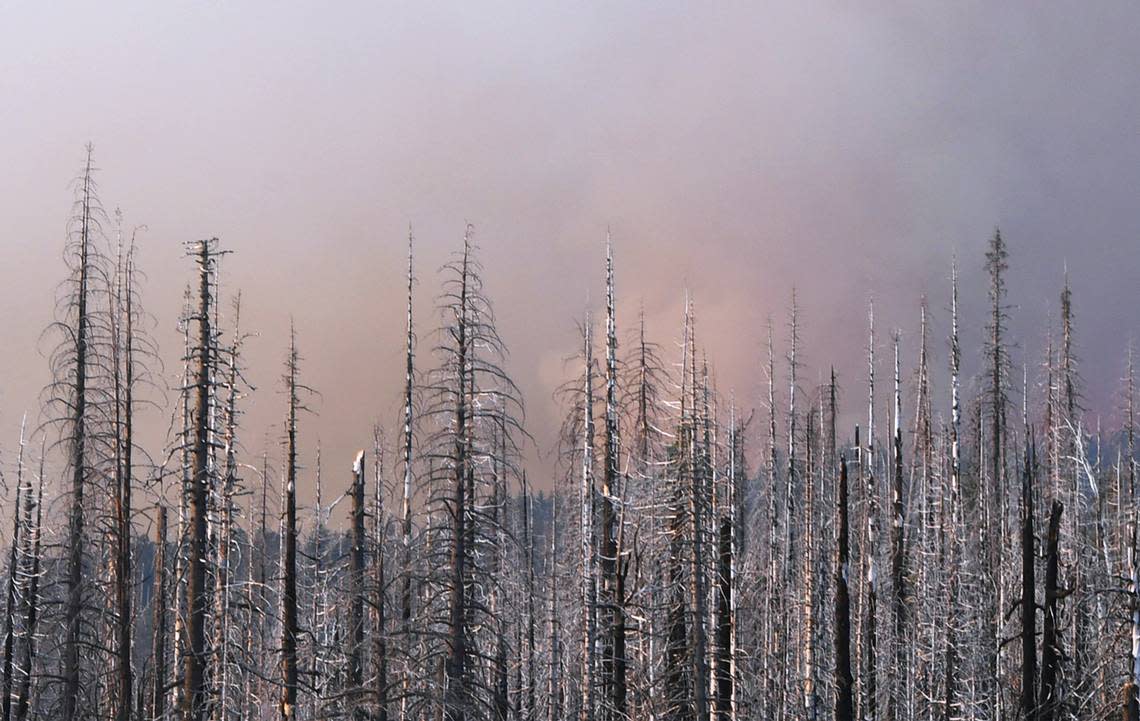
In 2021, Fresno’s temperature surpassed 100 degrees 69 times, a record-breaking number of days for the city. These extreme temperatures, according to the Centers for Disease Control and Prevention, could lead to heat-related illnesses, including heatstroke and exhaustion.
But that extreme weather disproportionately hits residents like Fox, according to interviews conducted by Fresnoland and the Central Valley News Collaborative. Vulnerable communities in the central San Joaquin Valley bear the brunt of extreme weather conditions, suffering damage to their health as well as loss in income and work opportunities.
Climate change is a global issue
Just in the first eight months of 2022, most of the globe has experienced extreme weather in one form or another.
In the U.S., residents of Pennsylvania, New York and New Jersey suffered “dangerously hot conditions” in July when temperatures ranged from 105 to 110 degrees. During most of July, the Twin Cities and much of Minnesota operated under a heat advisory because of record-setting temperatures above 100 degrees. Eastern Kentucky had two 1-in-1,000-year rain events that caused a record-breaking flood that overwhelmed entire communities and killed dozens. And the US National Oceanic and Atmospheric Administration (NOAA) is forecasting an above-average 2022 hurricane season.
Worldwide, heatwaves have become more frequent, more intense and longer-lasting. The world has already warmed by about 1.1 Celsius since the industrial era began and temperatures will keep rising if nothing is done, according to conclusions drawn from temperature readings collected by weather stations on land, on ships and by satellites from different parts of the world.
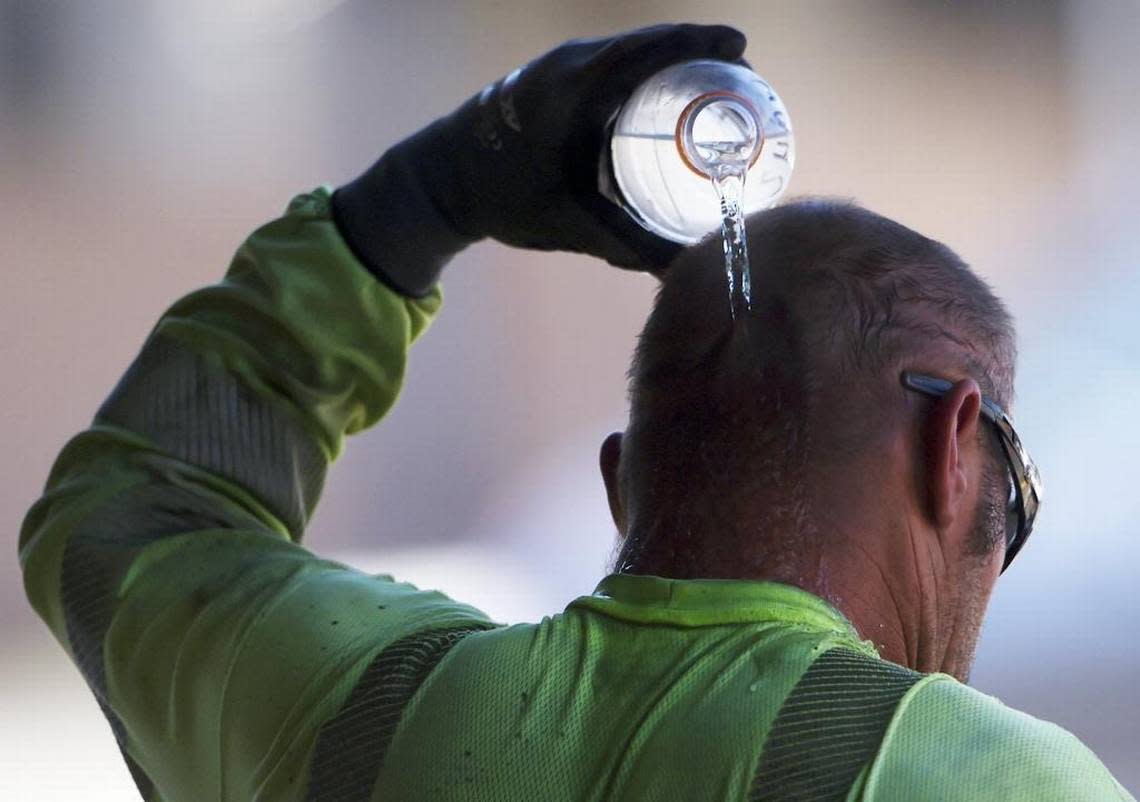
Most of Europe — including France, Spain and Portugal — has experienced raging wildfires this year and United Kingdom residents had their first-ever red warning for exceptional heat. Pakistan is having heavier than normal rains.
Around the globe, the people hardest hit by these extreme weather phenomena are frontline and vulnerable communities. In the San Joaquin Valley, that includes people earning low incomes, immigrants, farmworkers, non-English speakers, and other underrepresented communities who may experience inequities in access to drinking water, clean air, education, recreational opportunities and economic activities.
Dr. Mackenzie Yore, a UCLA National Clinician Scholar and UCSF resident working with the FUERTE Project called this a “global phenomenon.”
“The communities that are most heavily impacted by the effects of climate change are, on a global scale, the communities that did the least to contribute to climate change as a problem,” Yore said. “And the effects are also impacting the communities that have the fewest resources to protect themselves.”
Experts say that the extreme weather conditions experienced across the globe — wildfires, heavy rains and winds, floods, and heatwaves — have something in common: They result from climate change, which is accelerating existing weather patterns in various parts of the world.
What does climate change mean for the San Joaquin Valley?
According to the Union of Concerned Scientists, hotter temperatures are causing a build up of gasses like carbon dioxide and methane, which trap the sun’s heat, like in a greenhouse, leading to even hotter temperatures, known as global warming.
This build up of greenhouse gasses, scientists say, is the crucial link between temperature rise and human activities. Because the carbon produced by burning fossil fuels has a distinctive chemical signature, scientists can tell the source of the gasses.
“In the simplest possible terms, carbon dioxide and other greenhouse gasses in the atmosphere, such as methane, basically form a blanket in the atmosphere that traps heat,” said Jane Baldwin, an assistant professor and researcher of earth science systems at UC Irvine. “When you increase the amount of greenhouse gasses, it’s kind of like making that blanket thicker, basically. And so you’re going to end up seeing even higher temperatures across the globe.”
For California, climate change means higher temperatures, increasing evapotranspiration (water that evaporates or is used by plants), longer and more severe droughts, declining snowpack, more intense rain storms, more frequent and extensive wildfires and rise in sea level.
In the San Joaquin Valley, the annual average maximum temperature has increased by 1 degree since 1950 and is projected to increase 4 to 5 degrees by mid-century, according to California’s Fourth Climate Change Assessment for the San Joaquin Valley.
The assessment found that if greenhouse gas emissions continue to rise at high rates, half of the valley will experience average maximum temperatures of over 80 degrees, with the number of extreme heat days projected to increase from four to five days per year to 18 to 28 days per year by mid-century.
High heat then reduces the snowpack in the Sierra Nevada, an essential component of the region’s water supply. But the heat also is expected to catalyze an earlier snowmelt season, shifting the timing of when water is available, making it more unpredictable for farmers and cities who rely on snowmelt, according to the assessment.
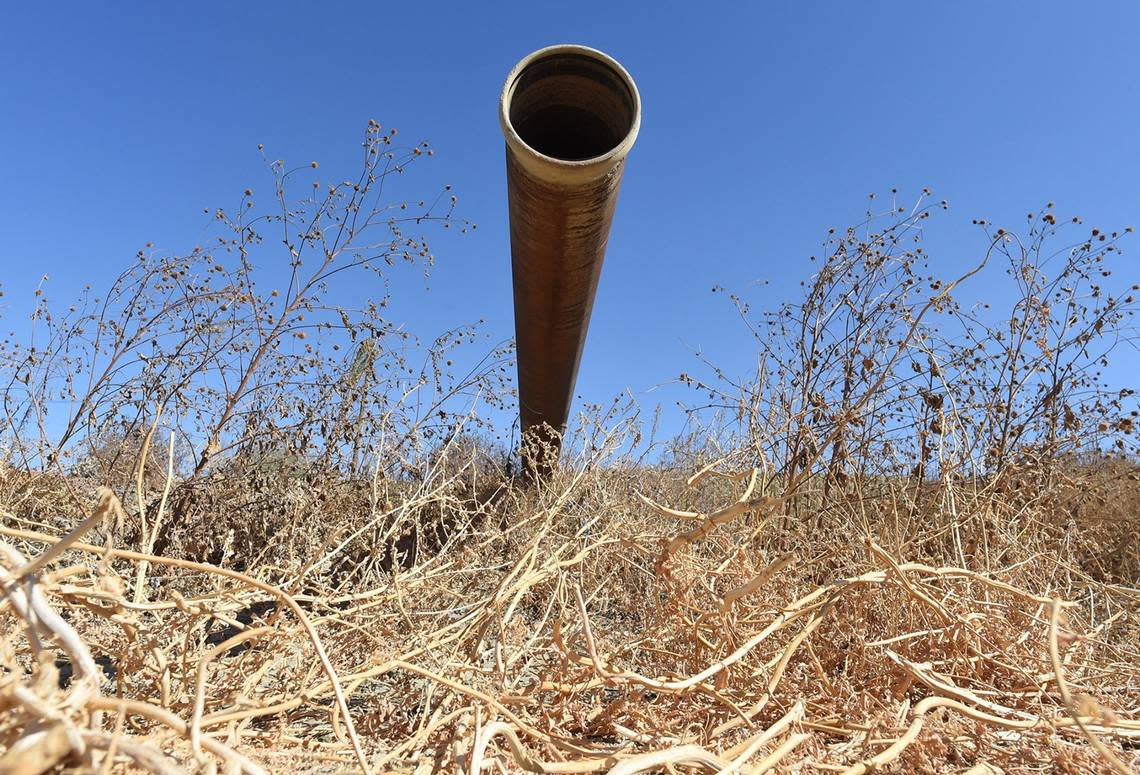
The wet seasons are expected to get wetter, creating flood risks, and the dry seasons are expected to get drier, leading to increased groundwater pumping, which has historically resulted in many people, mostly those in rural, lower-income and Latino communities, experiencing dry wells and water quality challenges.
These challenges, according to the assessment, are exacerbated by local decisions; intensive agriculture and urban development have obliterated habitat for native plants, animals, and ecosystems that have historically protected the valley.
And the valley’s dominant agricultural industry is also threatened by climate change, as diminishing water availability and high heat make it increasingly difficult to sustain production at current levels.
Vulnerable communities bear the brunt of climate change
When the wells ran dry in East Orosi this year, in Okieville and Tooleville last year and Tombstone in 2020, the majority Latino farmworker communities struggled with access to water as well as loss in farm work opportunities.
A person’s socioeconomic and racial group often dictates the impact of climate warming on their lives — meaning, their exposure to heat as well as heat-related sickness, mortality, and energy costs.
A 2021 study of cities in the southwest, including Fresno, Bakersfield, Los Angeles, San Jose and Sacramento, found that older, low-income, and minority populations were more likely to suffer disproportionately because of prevailing environmental conditions like increasing temperatures.
The climate assessment for the San Joaquin Valley found that climate change is already making life much worse for those in rural disadvantaged communities in the valley, especially when it comes to safe drinking water and air quality.
Among the causes of these inequities are past policies of redlining which prevented people of color from purchasing homes in certain neighborhoods, absence or severely limited green spaces in low-income neighborhoods and higher proportion of amount of paved surfaces, as well as federal, state, and local policies that prioritize private car use and have pushed public and private investments into predominantly white and affluent areas.
Members of disadvantaged communities are also less likely to afford air conditioning.
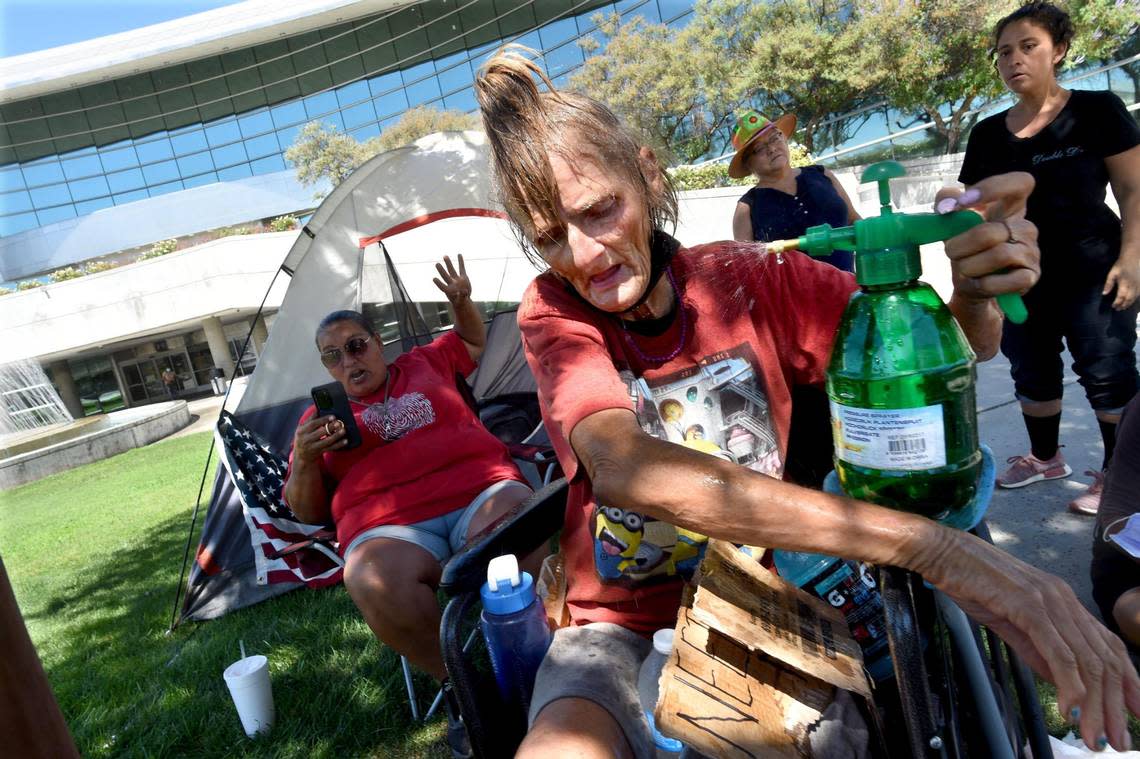
Throughout the summer, hundreds of Fresno’s unhoused residents crouch under any shade they can find, some saying that when it gets too hot, they go to the canal and try to cool off, using buckets to fetch cold water. Several people reported having thrown up or fainted in the past due to overheating.
T.D. Thomas, 58, said his body has overheated a number of times and that he comes to the cooling center at the Frank H. Ball Community Center for some reprieve from the heat. Unhoused and without a car, Thomas said having a place to cool off makes a big difference. He had walked the 1.2 miles from the Fresno Mission on G Street.
He has been homeless for seven years and has endured many hot days in Fresno.
“You have nowhere to go,” he said. “You just have to make the best of whatever there is.”
Series explores impact of climate change on Fresno area residents
Fresnoland and the Central Valley News Collaborative are exploring the impact of climate change on various populations within the central San Joaquin Valley, particularly those most vulnerable to these extreme weather conditions.
As part of an occasional series, we will report on how extreme heat, wildfire smoke and drought are intersecting with the health, income and livelihoods of Fresno County residents.
We’ll report on how the drought is affecting farmworkers in west Fresno County; how extreme heat is creating unlivable conditions for the unhoused population and renters without adequate air conditioning; and how an apparent lack of cooling centers in unincorporated and rural areas of Fresno County has left residents vulnerable to the heat.
Finally, the series will offer solutions that other areas are exploring and information about how to access available resources.
If you have a question or story idea related to the impact of climate change on you and your neighborhood or have ideas on what you would like local decision-makers to do regarding climate change? Send your ideas to tips@fresnoland.org .
